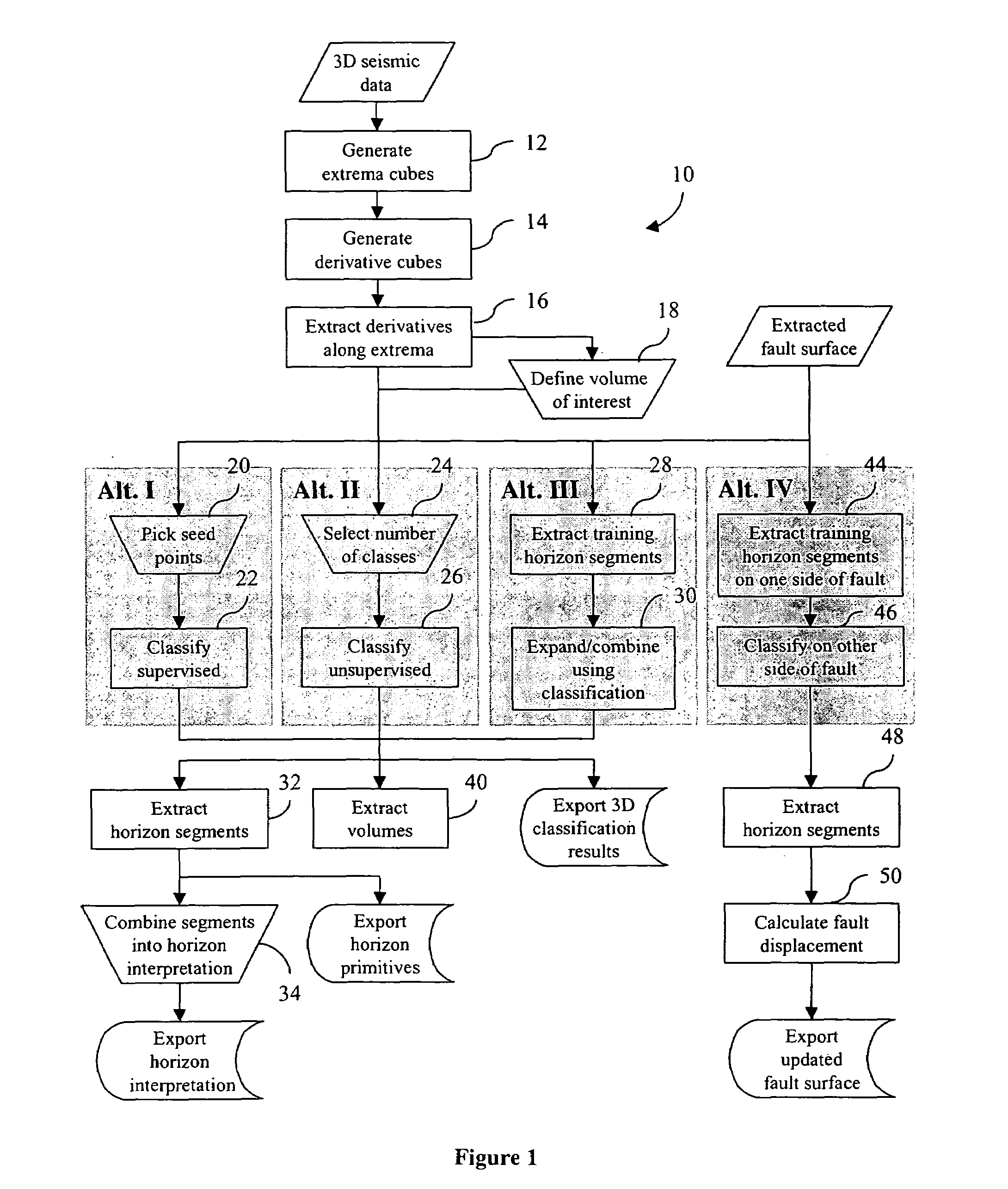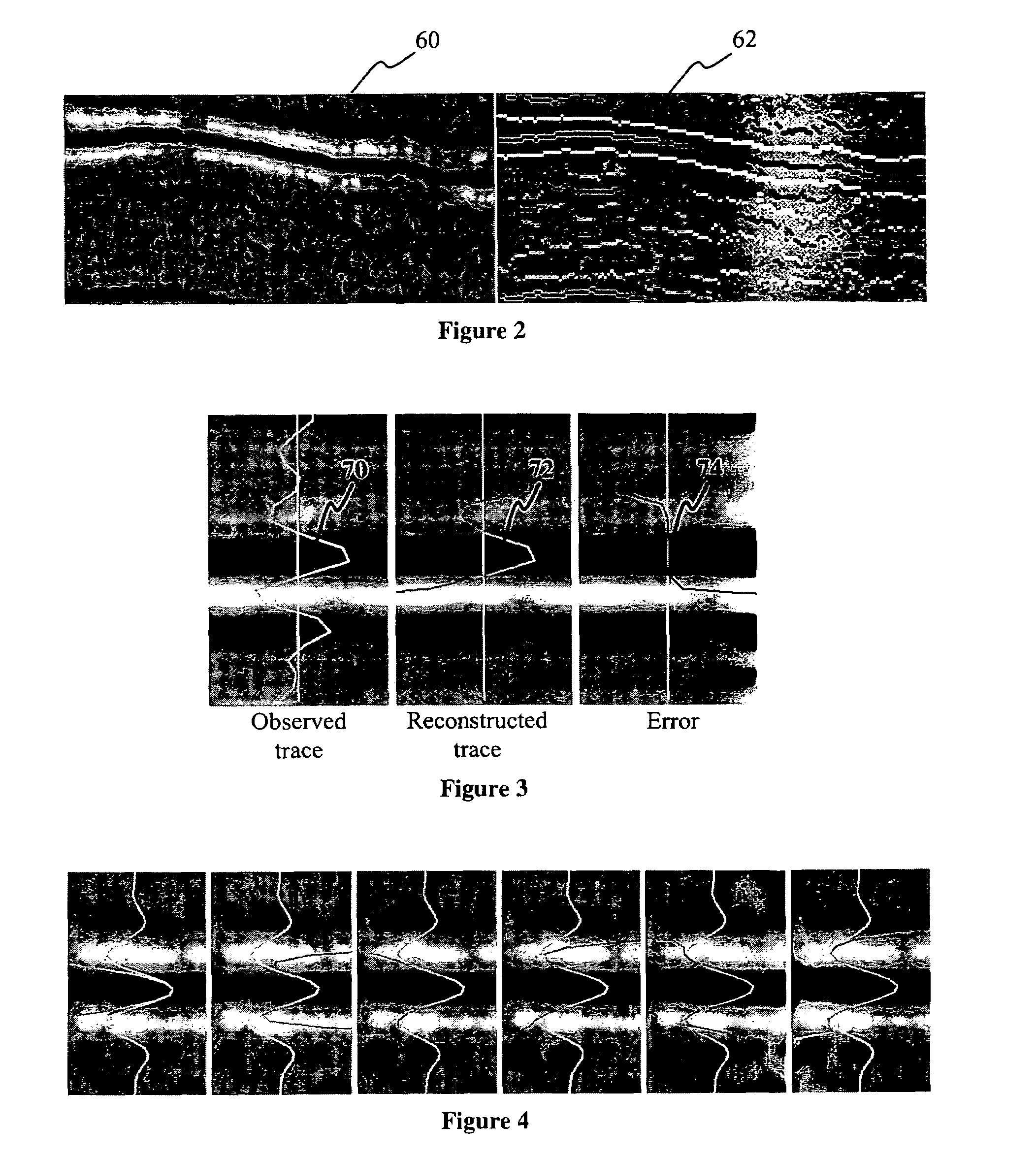Extrema classification
- Summary
- Abstract
- Description
- Claims
- Application Information
AI Technical Summary
Benefits of technology
Problems solved by technology
Method used
Image
Examples
Embodiment Construction
[0022]A flow diagram outlining the extrema classification methodology is shown in FIG. 1 as Extrema Classification Methodology 10. In this method, structural interpretations are placed on seismic extrema, and the first step in the workflow of the current invention is to obtain a representation of extrema within the seismic volume, preferably with sub-sample precision. This is shown in FIG. 1 as Generate Extrema Cubes 12 and involves identifying a plurality of extrema points associated with said seismic data, as discussed in more detail below.
[0023]Orthogonal polynomials may be used to reconstruct the seismic trace S(z) locally, such as by using the Volume Reflection Spectral decomposition technique (VRS) where orthogonal Chebyshev polynomials gi are used as the basis functions:
S(z)=b0g0(z)+b1g1(z)+ . . . +bngn(z) (1)
This method is described in significantly more detail in U.S. Pat. No. 6,240,370, issued May 29, 2001 to Lars Sønneland et al.
[0024]Orthogonal polynomial reconstruction...
PUM
 Login to View More
Login to View More Abstract
Description
Claims
Application Information
 Login to View More
Login to View More - R&D
- Intellectual Property
- Life Sciences
- Materials
- Tech Scout
- Unparalleled Data Quality
- Higher Quality Content
- 60% Fewer Hallucinations
Browse by: Latest US Patents, China's latest patents, Technical Efficacy Thesaurus, Application Domain, Technology Topic, Popular Technical Reports.
© 2025 PatSnap. All rights reserved.Legal|Privacy policy|Modern Slavery Act Transparency Statement|Sitemap|About US| Contact US: help@patsnap.com



